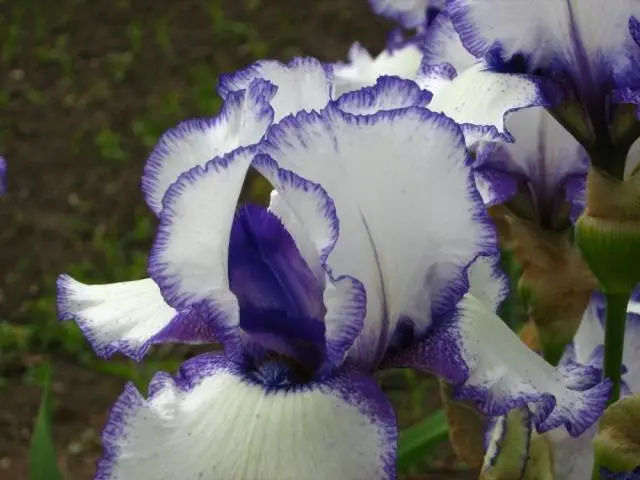Contents
Those times when irises were randomly planted throughout the backyard in small heaps or flower beds are long gone. Now some flower growers are not only trying to grow as many varieties of these flowers as possible, but also carefully plan their site in accordance with the timing of flowering, plant height, and care rules. All these factors are taken into account when compiling a variety of flower arrangements, alpine slides and landscape decoration. Iris is the best suited for this purpose. Perhaps that is why it is often chosen as a component for the design of spring-summer flower beds and flower beds. And not in vain. Despite the fact that it blooms for a short time, but unlike many flowers of its extraordinary shape, the leaves perfectly retain their green, saturated color until autumn. Timely transplantation of irises in the fall is the key to beautifully designed flower beds.
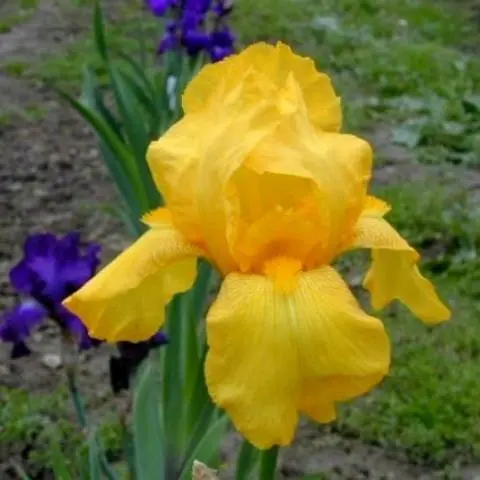
Another advantage of these garden flowers is a wide range of colors, from white to dark brown. Their aroma is also varied: from delicate caramel with vanilla to chocolate. And despite the unpretentiousness of this flower in care, it is still necessary to transplant irises. Moreover, transplanting irises in the fall is the most prosperous period.
Why it is necessary to transplant irises in the fall
The opinions of flower growers regarding the timing of transplantation of irises differ. Someone advises planting plants in the spring, someone prefers to do this in the summer. More experienced flower lovers advocate transplanting irises in the fall. And they support their beliefs with reasoned arguments.
- By planting in early autumn, you give them the time they need to take root. When transplanting in the spring, you deprive them of this time, which immediately affects flowering.

- With the advent of spring, insects are activated and actively multiply. Many of them can cause irreparable harm to newly planted flowers. After all, immediately after transplantation, irises are most vulnerable. And in the fall, the number of pests is significantly reduced. Therefore, plants are at less risk.
- There are a lot of troubles on the plot with the onset of spring. Transplanting irises in the fall will free up your precious time. It is important to choose the right time to plant irises without haste. And with the onset of warm spring days, you will only admire your favorite flowers.
Features of the growing season of irises
An annual transplant of irises in the fall is not required, but once every 3-4 years it is necessary to plant the plant in order to rid it of old roots. New roots will quickly grow. Without a transplant, they cease to bloom violently already in the 5th year. This is especially important for varietal flowers.
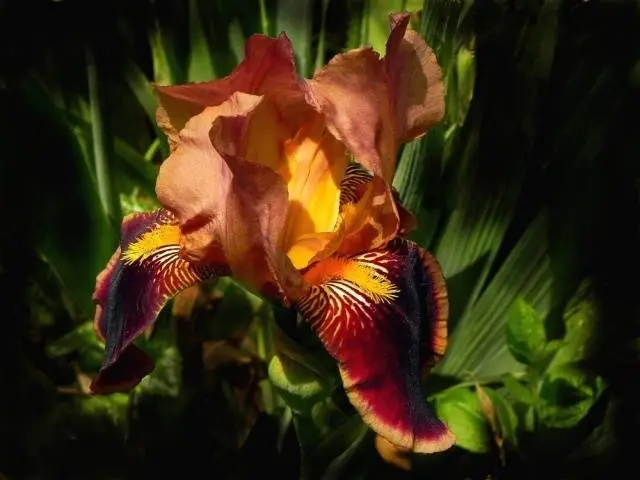
Irises bloom from the second half of May to the end of June, depending on the variety and regional affiliation. But with the end of flowering, their growing season does not end.
The growing season of irises during the year is divided into several stages:
- With the onset of spring, as soon as the snow melts, they rapidly increase the aerial part of the plant. Judge for yourself, in just a month and a half, from the first sprouts, they turn into lush green bushes and the first buds appear on them. It is for this reason that many flower growers are advised not to transplant irises in the spring. Indeed, for rapid growth, they need a well-rooted underground part of the plant during this period. Planting irises in autumn is more preferable.

- At the end of the flowering phase in early July, the active development of the root system begins. During this period, new links are formed, on which young buds will appear by autumn. They will bloom next spring. Therefore, if you decide to transplant irises, it is important to catch the moment when new links have grown, but there are no buds yet. Summer transplantation of irises is dangerous because the newly formed tender buds can be easily damaged. Despite numerous advice, it is still not worth transplanting until mid-August.

- By the second half of August, the root system of irises completes the phase of active development. Young buds formed on the links have grown stronger and are perfectly visible to the naked eye. This factor is of no small importance when dividing a large bush into several small ones. From now until mid-October is the most ideal time to transplant and plant irises in the fall.
It’s no secret that irises bloom magnificently if ideal conditions are created for them and the root system is well developed. Since the flowering period begins at the end of spring, it is quite natural that they need to create such conditions in the fall so that by this time the roots are strong and well rooted.

If you decide to transplant irises in the spring, then most of the time and effort of the plant will be spent on strengthening and rooting the root system. It is useless to wait for flowers this year.
Subject to the deadlines and rules for transplanting irises in the fall, in one season a bush will grow from a small seedling, which next year will give good links that can later be planted.
Some features of irises
Knowing some of the preferences of these plants, you will see that it is not difficult to grow them.

- Irises are very demanding on such an indicator as soil moisture. Therefore, too frequent watering or groundwater close to the surface can cause root rot. To prevent this from happening, flower growers are advised to raise the bed for planting 10-15 cm above ground level.
- Irises do not like too frequent watering: it is enough to water them 2-3 times a week in dry weather. The rest of the time you need to focus on the condition of the soil at the base of the aerial part of the plant. If the ground is dry, then the flowers require moisture. And if the soil is moist and soft, then watering is not required.
- The roots are always located closer to the surface of the earth. This feature must be taken into account when planting and caring for irises. Weeds must be manually removed in a timely manner. A hoe or flat cutter can damage the roots.
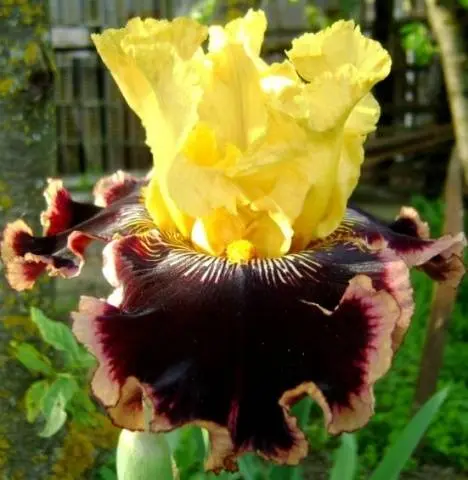
When and how to transplant irises correctly, you can learn from the following video:
Preparing the soil for transplanting
Before you start transplanting irises in the fall, you need to choose the right place for the future flower garden. The composition of the soil, groundwater, illumination strongly affect even such picky flowers.
Irises are very fond of sunlight. Especially in the morning, the maximum amount of sun should fall on the flower bed. Remember where in your area the snow melts the fastest in the spring. There you need to plant irises in the fall. This will be the perfect place for an iris paradise.
It is desirable that strong winds also bypass the place for transplanting irises.
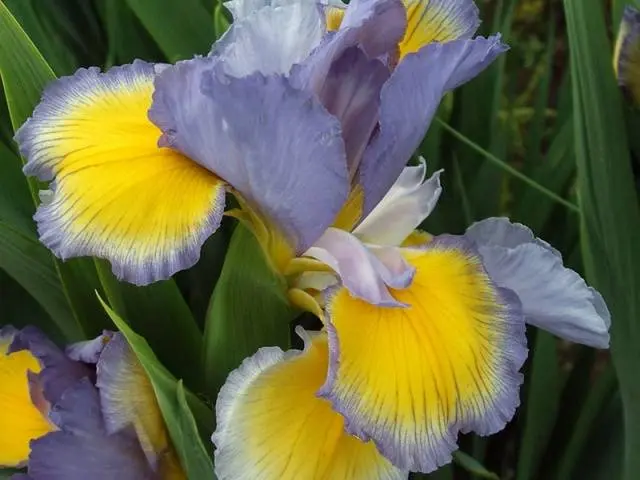
Unlike other garden flowers, irises love loamy, slightly acidic soil. If the earth is too dense and heavy, sand should be scattered over the surface before digging the area. If the soil is light and sandy, then add a little clay. You can add a small amount of well-rotted humus and ash to the soil, provided that the soil is too acidic. It will be useful to add potash fertilizers and superphosphates to the soil before transplanting irises in the fall.
Growth stimulants when transplanting irises in autumn or spring are not recommended to be introduced into the ground. In autumn, they will not allow the roots to fully prepare for the onset of winter. And in the spring, the root system, having given all its strength to the leaves, will become weak and defenseless.
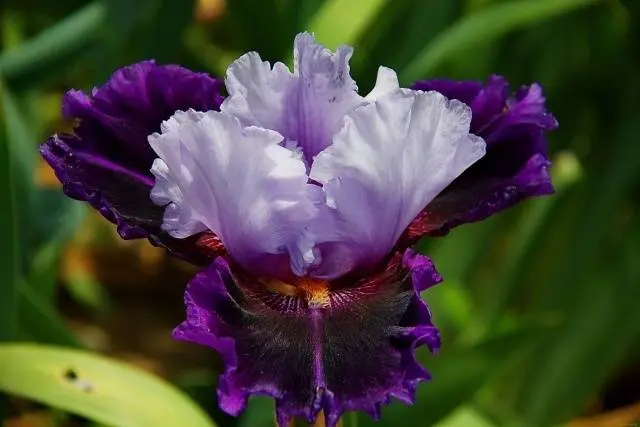
It is advisable to complete all preparatory work approximately 7 to 10 days before the start of transplanting irises in the fall. In order for the soil to compact and take on the desired consistency, the area intended for planting should be watered abundantly 3-4 times. During this period, the loosened and fertilized soil will compact and settle. Now you can plant irises on the prepared site.
Preparation of planting material
When planning planting work, flower growers are guided not only by such a factor as the time of year. The main signal when you need to transplant irises in the fall, so that they take root and take root better, is the state of the foliage. As soon as the tops of the leaves began to turn yellow, you should immediately start transplanting.
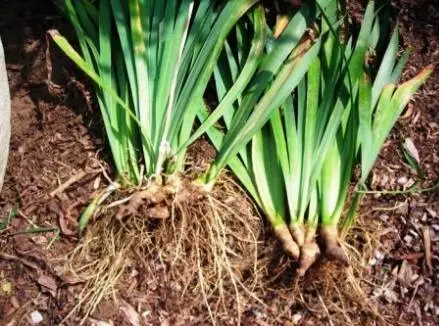
An iris bush that needs an emergency transplant should preferably not be watered or fertilized 2 to 3 weeks before planting. It is necessary to extract the rhizome from the soil only with a pitchfork and with great care. To do this, stepping back from the base by 20 – 25 cm, you must first dig around the iris around the perimeter. And then carefully remove the roots from the ground. After shaking off the remnants of the soil, dry the planting material well. After drying, you can begin to divide the main bush of irises into small divisions.
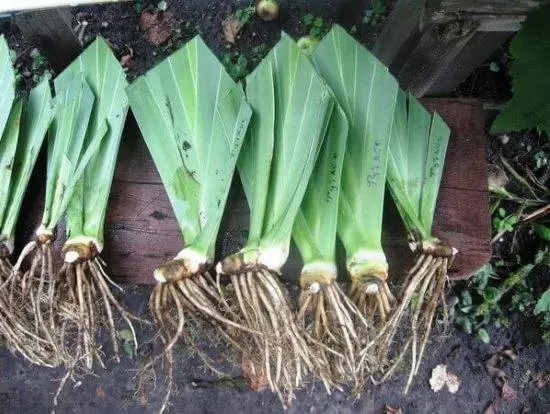
At this stage, it is important to know how to properly separate small layers. It is highly undesirable to divide the bush for subsequent planting manually, without special tools. So, you can not only break the roots into links incorrectly, but also damage most of the young buds. All seed material will be hopelessly damaged and unusable. Separation must be done with a sharp, clean knife. When cutting, it is important to pay attention that at least one “fan”, several young buds and a piece of root up to 10 cm long are located on each separated root. The cut site should be immediately treated with ashes, thus carrying out a kind of disinfection.
Too long side roots of irises need to be trimmed. Their length should be from 5 to 10 cm. Longer absorbent roots will interfere with the transplantation of irises.
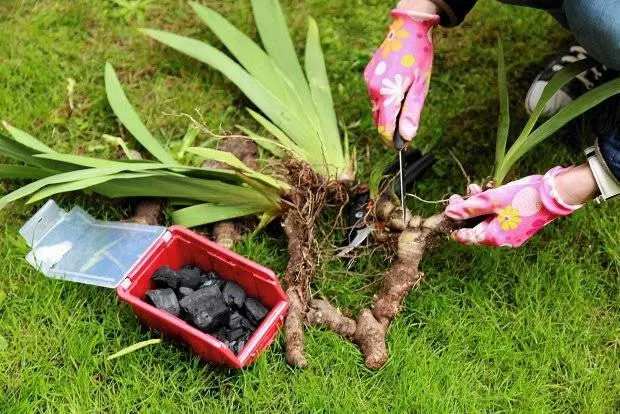
Before planting the seed in the autumn in the prepared soil, it should be treated with potassium permanganate (light pink solution) or a fungicide. In potassium permanganate, the roots are kept for about 20 – 30 minutes, in a disinfectant solution – according to the instructions on the package.
Iris leaves should be cut 2/3. The shape of the cut should resemble the roof of a house. It is undesirable to completely cut off the leaves, since the process of photosynthesis goes on in them until the frost. Irises of different varieties should be marked or signed.

Transplanting irises in autumn
The process of planting irises in autumn is very simple and consists of only three steps. The main thing is to have a desire and a small plot of pre-prepared soil. It is desirable to plant flowers in dry weather.
- The landing hole for irises should not exceed 10-12 cm in depth. In the middle of the recess, you need to form a small mound, 2-3 cm high.
- It has a cropped delenka. It is important that the absorbent roots, as it were, descend along the mound to the bottom of the planting pit. Gently straighten all the roots. Don’t let them curl up.
- And the last – cover the roots with earth. At the same time, keep in mind that when watering, the soil will settle by 1-2 cm. The basal neck and a small part of the main root after shrinkage should be located above the ground.
The autumn work on transplanting irises ends as usual – with moderate watering.

As you can see, there is nothing difficult in transplanting irises in the fall. Most importantly, follow the plants for two weeks after planting. Each planted delenka should stand strictly upright, not leaning to the side.
The distance between planted flowers can vary from 10 cm to 35 cm. Why such a difference? When determining the distance you need, you need to consider:
- Plant variety.
- Flower height. Low-growing varieties can be planted closer to each other, tall ones – as far as possible.
- Change frequency. If within 3 – 5 years the transplantation of irises is not included in your plans, then it is advisable to increase the distance between the divisions.
The author of the video will tell about the basic rules for planting and caring for irises for beginner gardeners:

Care of irises after autumn planting
Provided that the autumn turned out to be warm and does not indulge in heavy rains, the planted irises should be watered after three to four days.
Care for irises after planting in early autumn consists in timely weeding. It is important to consider that the roots are shallow, and in order not to hurt them, it is better to remove the weeds manually.
After transplanting irises in autumn, it is important to monitor the decreasing air temperature. When frost approaches, it is advisable to mulch them with dry leaves, peat or spruce branches. In the Siberian region, mulching is mandatory. As soon as possible, as soon as the snow melts and there is no threat of heavy morning frosts, the mulch layer should be removed. More care for irises in the fall after transplantation is not required. Mother Nature will do the rest. The first spring rays will warm the roots and soon the first green arrows will appear on your site.

If you follow the simple rules of planting and care, irises gain color in the spring. During the summer period, they build up an excellent root system. But you can divide and plant the root only in the second year after planting.
Despite the fact that irises are unpretentious in their care, they should still be transplanted every 3-5 years. Thus, you will protect them from the degeneration of varietal characteristics. Moreover, compliance with the planting dates will allow you to maintain the root system in excellent condition. And thanks to her, at the end of spring, irises will delight you with lush flowering and delicate aroma.

Conclusion
As you can see, caring for irises in the fall is not difficult at all. Maybe it is for this reason that they can often be found on flower beds near kindergartens and schools. After all, blooming irises are often associated with the last call and the beginning of summer holidays.











